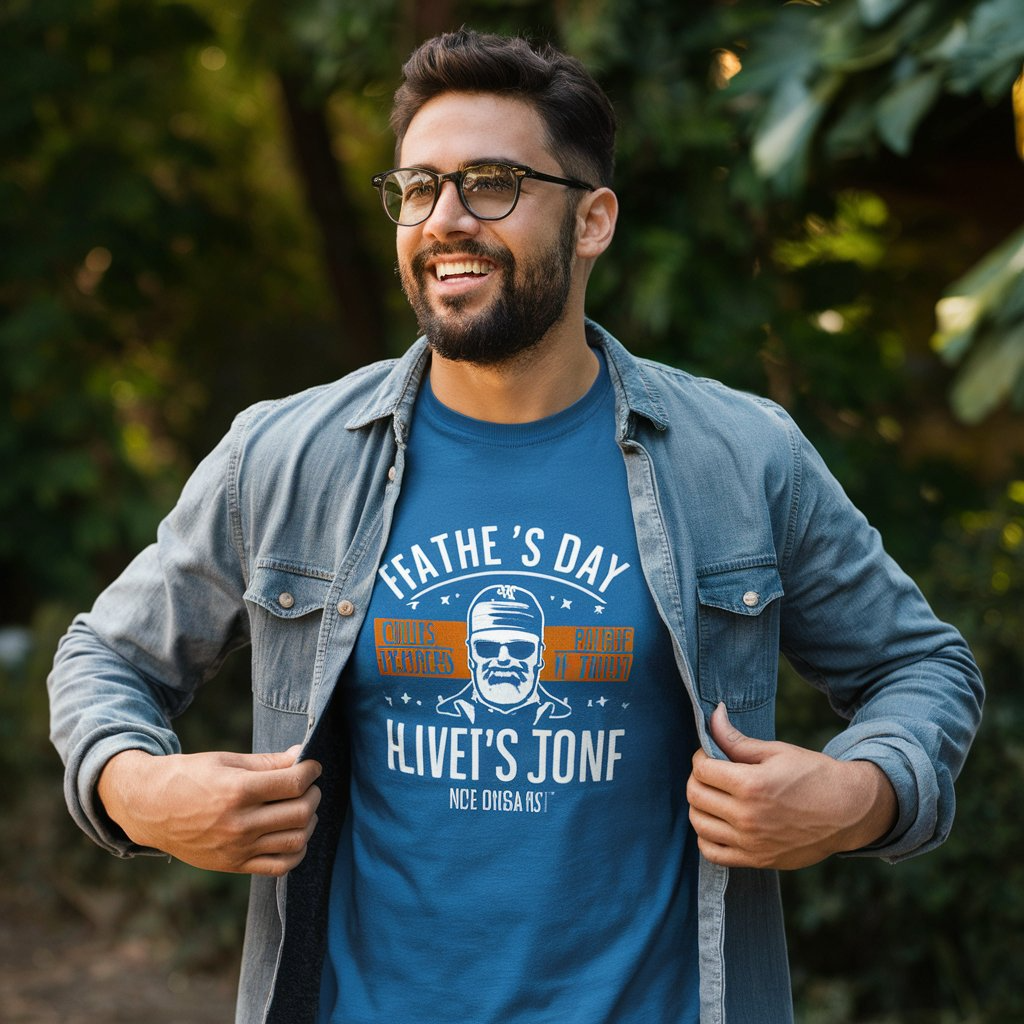Finding the perfect t-shirt is not just a matter of picking one off the rack. It’s an art that involves understanding how fit, fabric, and style converge to create a piece of clothing that feels comfortable, looks good, and suits your personal aesthetic. A well-chosen t-shirt can serve as a versatile foundation for countless outfits, making it an essential staple in anyone’s wardrobe. In this guide, we will explore how to navigate through the myriad options available when selecting the ideal t-shirt for you. By delving deep into the nuances of fit, fabric, and style, you will be equipped with the knowledge needed to make informed decisions.
How to Choose the Perfect T-Shirt: Fit
When it comes to t-shirts, fit is arguably the most crucial aspect. A t-shirt that fits well enhances your body shape, provides comfort, and allows freedom of movement. Whether you prefer a snug fit or a more relaxed silhouette, understanding the various styles and cuts available is key.
Understanding Body Types
Every individual has a unique body type, and recognizing yours can help you choose a t-shirt that complements your figure. The main body types include:
- Athletic: Characterized by broad shoulders and a narrower waist, athletic figures often benefit from t-shirts that have a tailored fit. This helps accentuate muscle definition without being overly tight.
- Lean: For those with a slim build, fitted t-shirts can create the illusion of added bulk, while slightly looser styles can enhance a laid-back, casual vibe.
- Curvy: Curvy individuals might look for t-shirts that offer a little stretch or drape, allowing for comfort without clinging too tightly to the body. A-line or empire waists can also provide a flattering silhouette.
- Plus Size: Plus-size individuals should focus on styles that enhance their shape. Cuts that are slightly longer and have a bit of structure often work well, as do V-necks that create an elongating effect.
Understanding your body type is the first step towards finding a t-shirt that not only fits but flatters.
Finding the Right Cut
The cut of a t-shirt can dramatically affect how it sits on your body. Here are some popular cuts to consider:
- Classic Fit: Often seen as the standard cut, classic fit t-shirts tend to offer a relaxed silhouette. They usually feature straight lines, making them suitable for a wide range of body types. These shirts may be a safe choice if you’re unsure about your preferred fit.
- Fitted or Slim Fit: Designed to hug the body, fitted t-shirts are great for showcasing a toned physique. However, they can sometimes be restrictive, so ensure you try them on to gauge comfort levels.
- Relaxed Fit: If you’re looking for a more casual look, relaxed fit t-shirts come with extra room in the torso and sleeves, allowing for easy movement. These designs tend to feel less constricting and can easily transition from day to night.
- Oversized: The oversized trend continues to dominate fashion, offering a stylish yet cozy option. Pairing an oversized t-shirt with fitted bottoms creates a balanced silhouette.
Experimenting with different cuts can help you determine which best aligns with your comfort level and personal style.
Sleeve Length and Neckline Considerations
The length of the sleeves and the design of the neckline can also significantly impact overall fit and style.
- Sleeve Length: T-shirts typically come with short, long, or three-quarter sleeves. Short sleeves are a go-to for warm weather, while long sleeves offer versatility for transitioning seasons. Three-quarter sleeves provide a stylish compromise between both extremes.
- Necklines: Common neckline styles include crew neck, V-neck, scoop neck, and boat neck. Crew necks offer a classic look, whereas V-necks can elongate the neck and draw attention toward the face. Boat necks, which sit wider on the shoulders, can add a touch of elegance.
Selecting the right sleeve length and neckline can further refine how a t-shirt flatters your body shape.
Trying Before Buying
Finally, always prioritize trying on t-shirts before making a purchase. Each brand may have variations in sizing, so don’t solely rely on labels. Move around, lift your arms, and ensure that the shirt remains comfortable throughout all motions. It’s vital to feel confident in what you wear, and an excellent fit can make all the difference.
Fabric
Once you’ve narrowed down your options based on fit, the next critical element to consider is fabric. The material of your t-shirt can influence its durability, comfort, and care needs.
Natural vs. Synthetic Fabrics
Understanding the distinction between natural and synthetic fabrics can help you find a t-shirt that suits your lifestyle and preferences.
- Cotton: Known for its breathability and softness, cotton is a top choice for t-shirts. It’s hypoallergenic and generally easy to care for. However, cotton can shrink or fade over time if not washed correctly.
- Linen: Linen offers a lightweight and airy option, making it perfect for hot climates. While it wrinkles easily, many appreciate its relaxed look. Linen does require special care, as it can lose its shape if not washed properly.
- Bamboo: Bamboo fabric is becoming increasingly popular due to its sustainability and softness. It possesses moisture-wicking properties and is often naturally antibacterial, making it ideal for activewear t-shirts.
- Polyester: As a synthetic fabric, polyester is durable and more resistant to wrinkling than natural fibers. It’s commonly blended with other materials to enhance functionality, especially in athletic wear.
Weights and Textures
Different fabrics come in varying weights and textures, influencing how they feel against your skin and how they drape on your body.
- Lightweight: Lightweight fabrics tend to feel cool and comfortable, making them ideal for summer months. However, they may not provide much coverage, so consider layering options.
- Midweight: Midweight fabrics strike a balance between durability and comfort, making them versatile across seasons. They can be worn alone or layered without feeling bulky.
- Heavyweight: Heavyweight fabrics often provide more warmth and structure, making them suitable for cooler weather or when seeking a more polished look. These fabrics can help retain their shape even after multiple washes.
Additionally, textures such as jersey, ribbed, or slub can add visual interest to a simple t-shirt.
Care and Maintenance
Considering how much effort you want to put into caring for your t-shirt is also important when choosing fabric.
- Easy-Care Fabrics: Cotton blends or synthetic fabrics tend to be low-maintenance, allowing for machine washing and tumble drying.
- Delicate Fabrics: Materials like linen and certain blends may require hand washing or air drying to maintain their quality. Always check care labels to ensure longevity.
Regular maintenance not only preserves the fabric’s integrity but also ensures your t-shirt continues to look great over time.
Deciding Based on Purpose
Consider where and how you plan to wear the t-shirt, as this can guide your fabric choices.
- Casual Wear: For everyday wear, breathable fabrics such as cotton or bamboo offer comfort and style. Opt for lighter weights during warmer months.
- Active Wear: If you’re purchasing a t-shirt for workouts or sports, look for moisture-wicking synthetic fabrics. These are designed to keep you dry and comfortable during physical activities.
- Work or Formal Settings: T-shirts designed for business-casual settings often utilize higher-quality fabrics that offer structure and a polished appearance. Look for heavier cottons or blends that resist wrinkling.
By aligning the fabric choice with purpose, you can ensure you get the most out of your t-shirt investment.
Style Tips
Now that you understand fit and fabric, let’s discuss how to incorporate your t-shirt into stylish ensembles. A perfect t-shirt can be endlessly versatile, lending itself to various looks that range from casual to dressy.
Color Selection
Color plays a pivotal role in how a t-shirt complements your overall style.
- Classic Neutrals: White, black, grey, and navy are timeless options that pair well with almost any bottom. A classic white tee, for instance, can elevate denim jeans or tailored trousers effortlessly.
- Bold Colors: Vibrant shades can add a pop of excitement to your outfit. When wearing bold colors, balance them with neutral elements to avoid overwhelming your look.
- Patterns and Graphics: Graphic tees can express personality and interests, while patterned shirts can introduce unique flair. Consider whether the patterns align with your existing wardrobe.
Choosing the right color can set the tone for your entire outfit.
Layering Techniques
Layering is an effective way to add depth and interest to an outfit featuring a t-shirt.
- Underneath Jackets: Pairing a t-shirt under a denim jacket or blazer can create a stylish contrast between casual and dressed-up aesthetics.
- With Sweaters: A t-shirt peeking out from under a chunky sweater adds texture and dimension to your look, particularly during colder months.
- Tucked or Untucked: Decide whether to tuck in your t-shirt for a more polished appearance or leave it untucked for a relaxed vibe. The right choice can depend on the occasion and the type of bottoms you’re wearing.
Mastering layering techniques can transform a simple t-shirt into a statement piece.
Accessorizing Wisely
Accessories can elevate your t-shirt game significantly, transforming a basic look into something striking.
- Jewelry: Minimalist necklaces or statement earrings can complement a simple t-shirt beautifully. Consider the neckline of your t-shirt when choosing jewelry – for example, a V-neck pairs nicely with a pendant necklace.
- Scarves and Hats: Adding a scarf can introduce both warmth and texture, while hats can complete your outfit with a fashionable flair.
- Footwear Choices: Your choice of footwear can impact the overall vibe of your t-shirt look. Sneakers provide a casual essence, while ankle boots or loafers can lend a sophisticated edge.
Strategic accessorizing can take your t-shirt from basic to breathtaking.
Choosing the Right Bottoms
What you pair your t-shirt with can dramatically alter its style.
- Denim: Classic blue jeans create a timeless look. Black jeans offer a chic alternative, while distressed options can add a trendy edge.
- Skirts: T-shirts can seamlessly transition into feminine territory when paired with skirts. A flowy maxi skirt creates a bohemian vibe, while a pencil skirt offers sophistication.
- Shorts: During warmer months, shorts are the perfect companion for a relaxed t-shirt. Denim cut-offs are a classic choice, while tailored shorts lend a polished touch.
Selecting complementary bottoms helps define the overall message of your outfit.
Conclusion
Choosing the perfect t-shirt involves a careful blend of fit, fabric, and style considerations. By understanding your body type, exploring various cuts and sizes, and selecting the right materials, you can curate a collection of t-shirts that not only suit your taste but also cater to your lifestyle. With thoughtful color choices, layering techniques, and accessories, a simple t-shirt can become an iconic piece of your wardrobe. Embrace the journey of finding your ideal t-shirt, and enjoy the confidence that comes from knowing you look great in what you wear!


